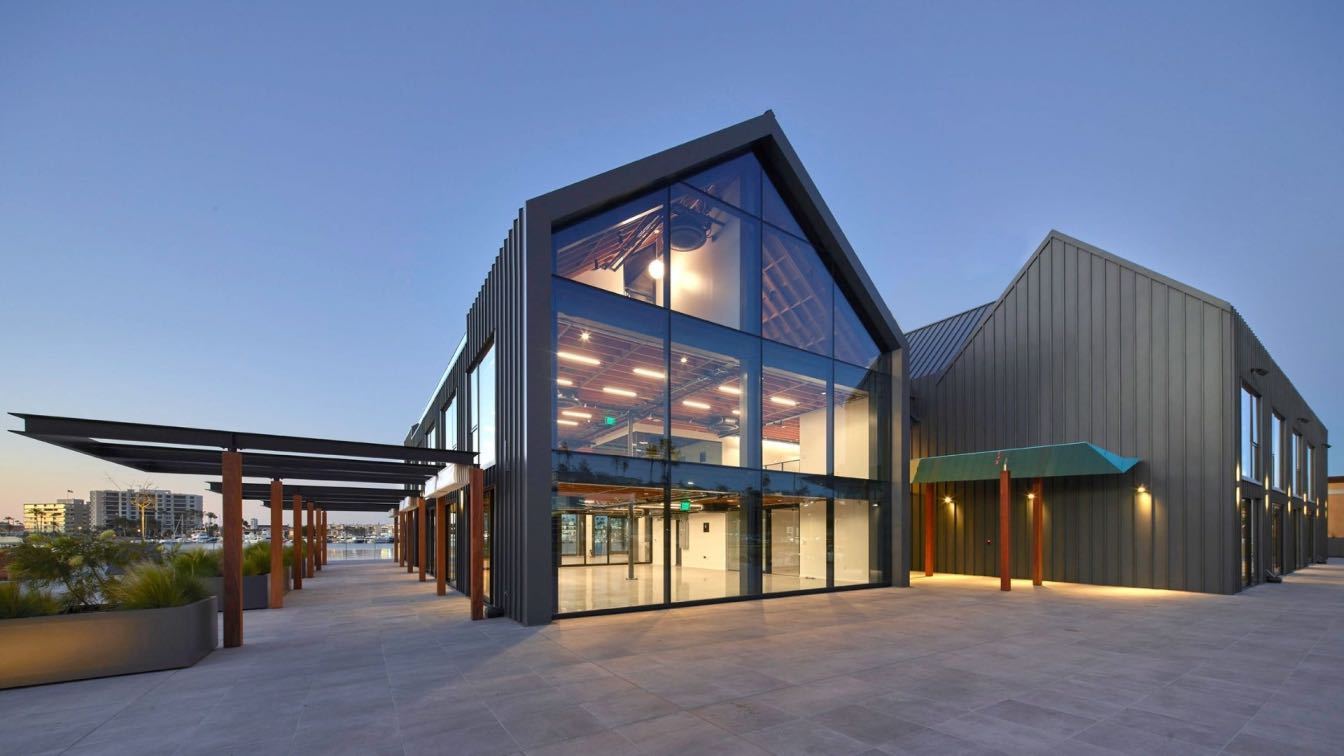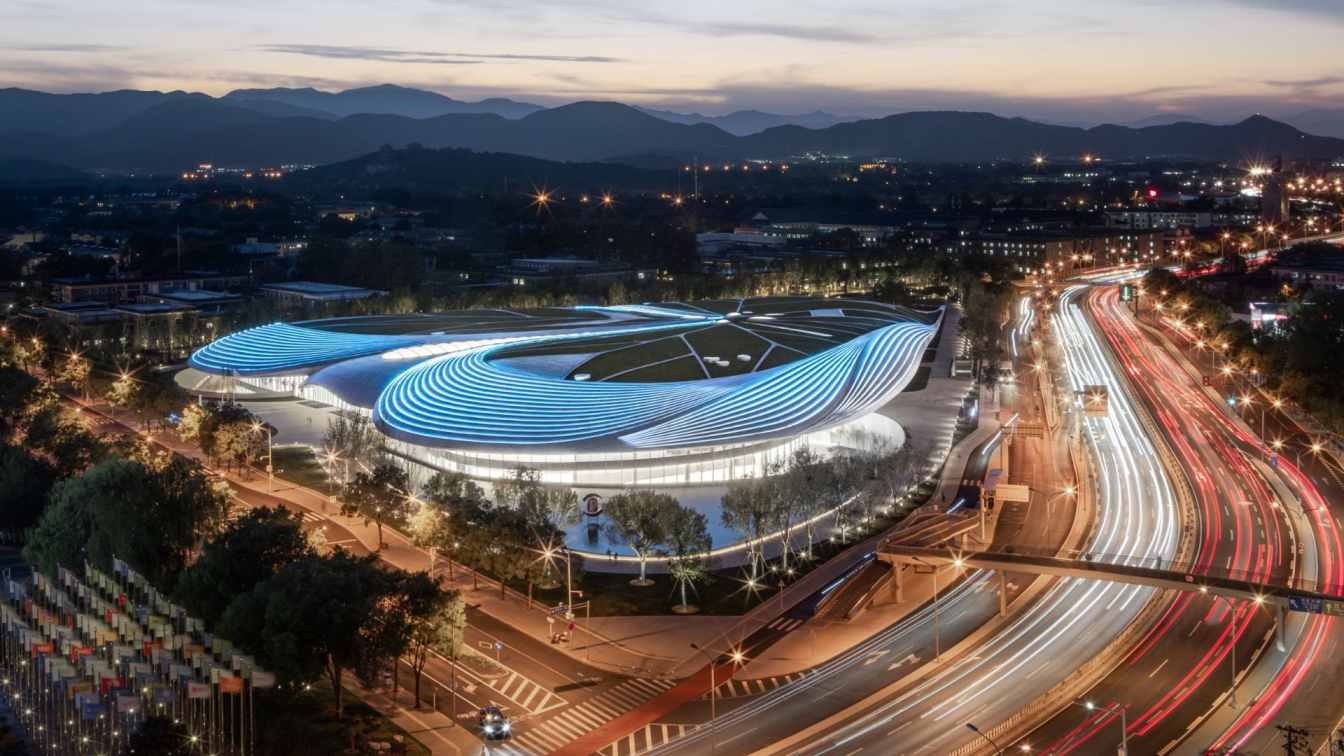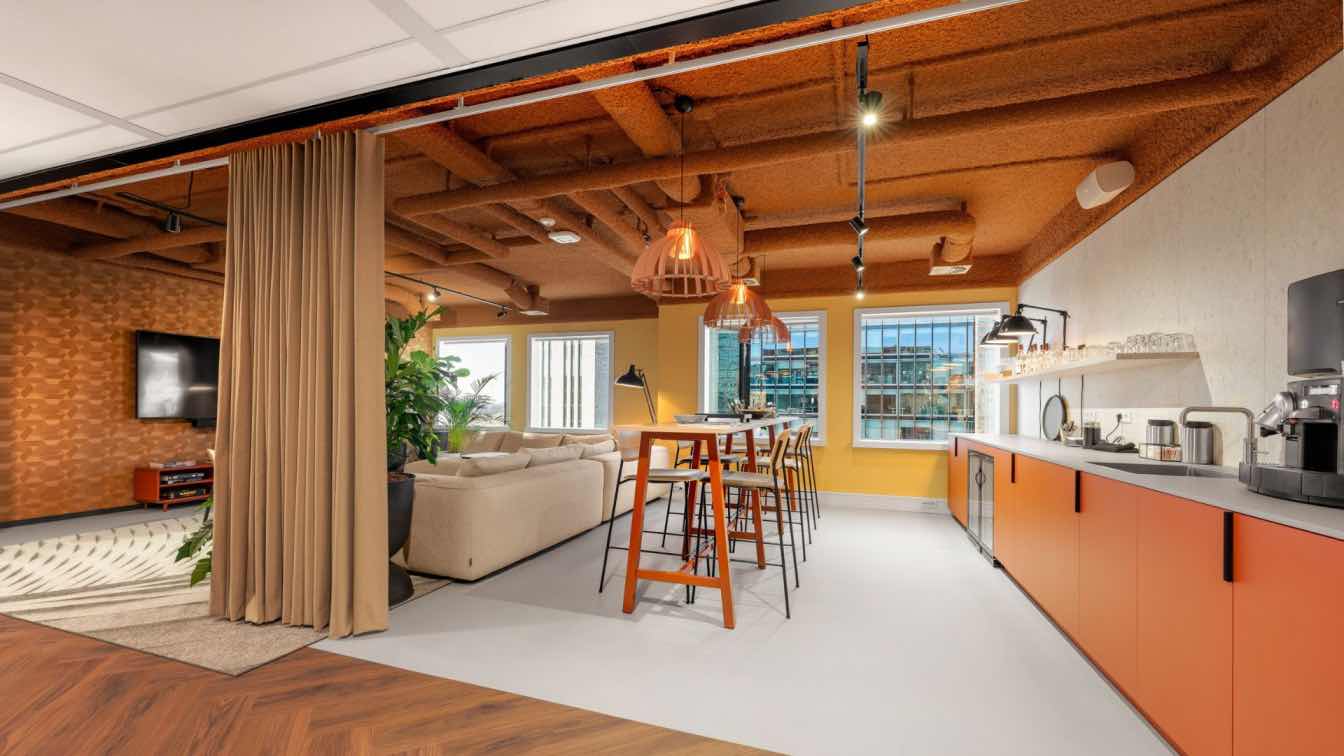ShubinDonaldson: Located at Mariner’s Mile in Newport Beach, 3101 West Coast Highway is a renovation and adaptive reuse of a 4-story Cape Cod-style building from the 1980s into a modern articulation of the marine coastal aesthetic.
Situated on a concrete podium 6’ above West Coast Highway, this project creates a modern aesthetic by removing existing embellishments to enhance the clean and timeless geometry of the gabled roofs, all while staying within compliance with the Coastal Commission’s strict reframing constraints. The existing dormers were demolished to create inset terraces providing tenants with fresh air, natural light, and unobstructed bayside views. Removing floor slabs enable double-height spaces while opening-up bayside gable walls with floor-to-ceiling curtain walls create transparency from the street to the bayside. Tenant spaces were also demised in a north/south direction to provide all tenants with bayside views throughout the building.
The bayside connection was shifted from walking through a parking garage to utilizing a public plaza, encouraging pedestrian traffic along the waterfront. The existing stairs and boat ramp were demolished and replaced with an ADA-accessible ramp that winds around new concrete-stepped planters, creating a meandering circulation that provides a slow and peaceful walk to the public podium. On the podium level, the existing boat storage was converted into a public plaza with planters and custom teak furniture, while outdoor patios off the east façade enhanced the ambiguity between interior/exterior conditions. Following the Mariner’s Mile design framework, which encourages connections to the waterfront as much as possible, a 10’ easement on the bulkhead side and east side of the property allows for public access to the bay.

Elevated by the rejection of typically provided bulky trim pieces, the project’s standing seam panels use custom break metal details throughout the project to create clean corner conditions. Exposed steel connections at the top of the columns emphasize the appearance of the horizontal channels floating above, while existing interior framing elements are exposed and sandblasted to provide a warm yet minimal space. The building’s juxtaposition of transparent and opaque surfaces creates tonal shifts and spatial depth throughout the façade. As the sun rises, standing seam metal panels glow with metallic luster while interspersed high-performance glazing reflects the sunset’s gradations.
The building’s sense of transparency is enhanced by the cable rails installed by local sailors, which provide physical safety without compromising the bay’s vistas. Other local marine elements include the main entry canopy, reminiscent of an inverted boat hull built by a local builder using marine-grade ply covered in resin. In addition, Ipe trellis columns and canvas covering materials draw inspiration from nautical masts and booms.
























